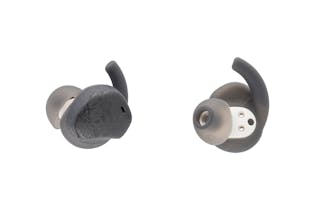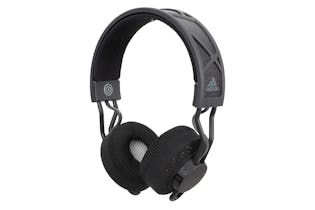Headphones
Find the best headphones for you with our buying guide and test results for 148 new and 46 discontinued models.
At a minimum, good headphones must sound good and be comfortable and durable. But what else do you need to know to find the best headphones for you?
Best headphones of 2025
Is it time to upgrade your headphones or get another set for a different situation? Our expert recommendations help you find the right ones, looking at the different types, features, performance and budget.
-

Best value headphones (on ear)
-

Best value true wireless earbuds
-

Best noise cancelling headphones (over ear)
-

Best noise cancelling true wireless earbuds

Get access to Consumer & see all reviews
✔ Personal support through our Consumer Rights Advice Line
✔ Premium articles and in-depth buying advice
✔ Add a Consumer magazine for even more exclusive content
Types of headphones
Modern headphones and earbuds are usually wireless, connecting to the audio source via Bluetooth. Many also come with an audio cable so they can be plugged directly into the audio source as an alternative to Bluetooth. We refer to these as wireless (wire optional).
Wired headphones have a permanently attached cable to plug into the audio source. They don’t have Bluetooth connectivity. They’re far less common with the move to wireless technology.
On and over ear headphones 
On and over ear headphones are like a headset. They have padded earcups that sit on (against) or over (enclosing) the ears, connected by a headband. A good set can provide great sound quality, noise isolation and comfort. They’re ideal for noisy environments and long listening sessions. They’re less suitable for exercising as they can make your ears hot and they’re heavier than other types.
Open ear headphones
Open ear headphones let you listen to audio while leaving your ear canals clear and free to hear environmental noises. They’re great for outdoor use but not the best for noisy environments. There are two main types:

- Bone conduction headphones conduct vibrations through your cheekbones instead of directing sound into your ears. Their earpieces hook over the ears, pressing against the cheekbones. They’re usually connected by a solid bar that rests behind the neck. This design keeps your ears cool and they tend to stay in place, making them great for exercising.

- Air conduction headphones have small, targeted speakers placed beside your ear canals. Their earpieces usually hook over the ears. Some, instead, clip on to the ear and others sit in the bowl shaped area just outside the ear canal. Air conduction headphones are typically true wireless (not connected by a wire or band) as are earbuds (see In ear headphones below).
In ear headphones (earbuds)
 Earbuds are usually free from any wires. This type is known as true wireless. Some earbuds, however, are connected by a wire that sits around the back of the neck. Confusingly, most are still considered wireless because they connect to the audio source via Bluetooth rather than an audio cable. Many can be used with a single earbud – but, in some cases, only the right (not the left).
Earbuds are usually free from any wires. This type is known as true wireless. Some earbuds, however, are connected by a wire that sits around the back of the neck. Confusingly, most are still considered wireless because they connect to the audio source via Bluetooth rather than an audio cable. Many can be used with a single earbud – but, in some cases, only the right (not the left).
The charging case of some true wireless earbuds can act as a Bluetooth transceiver. That means you can plug the case into an audio source that requires a wired connection (for example, the audio jack on an aeroplane seat), and the case will transmit wirelessly to the earbuds.
Because true wireless earbuds are small and light, they’re easy to transport and can be used in nearly any situation. They’re good for exercise, but you need a secure fit so you don’t lose one.
Noise cancelling
Headphones with active noise cancelling (ANC) – also known as acoustic noise cancelling – allow you to reduce environmental noise. They detect external sounds via microphones and cancel them out by playing the ‘opposite’ sound waves.
Most ANC models also have a transparency mode – sometimes called ambient mode or hear-through mode. This mode amplifies external sounds and blends them with what you’re listening to so you can remain aware of your surroundings. Check our test results to compare noise cancelling headphones.
Passive noise cancelling
Watch out for claims of passive noise cancelling – also called noise isolation. This describes the headphones’ ability to block noise physically like earmuffs do. While passive noise cancelling works well in some cases, it’s very different from ANC and you can’t turn it off when you want to hear your surroundings.
Battery run-time
Wireless headphones usually have a claimed battery life (run-time) on the box. We measure battery run-time – both off a full charge and off a 15-minute charge – in our lab test. Check our test results to compare headphones.
You should expect over-ear headphones to last for 30 hours, or 20 hours with active noise-cancelling turned on.
True wireless earbuds should last 6 hours, or 30 hours when repeatedly charged from a case. But lower your expectations if you’ll keep noise cancelling on full-time.
Check our test results to see how many full charges you’ll get from the charging case of different models.
Sound leaking
Sound leaking matters if you don’t want others to hear what you’re listening to or don’t want to be a nuisance in a quiet environment. Headphones that score highly in our sound leaking test have minimal to no sound leakage.
Other headphone features
- Controls: Most headphones have controls for volume, play/pause, skip forward/back and take/end call on the headphones. But some require control via the device you’re connected to.
- Voice assistance: Many models allow voice control via Amazon Alexa, Google Assistant, or Apple Siri.
- Auto-stop: Some models will automatically stop your audio track if you remove the headphones so you don’t lose your place or wear down the battery.
- Multiple device pairing: Many headphones can be paired via Bluetooth to more than one device at a time. That can be useful if you don’t want to miss phone alerts while you’re attending an online meeting or watching a movie with your headphones.
- Water resistance: An ingress protection (IP) rating indicates dust and water resistance. Higher numbers offer greater protection.
- Foldability: Many over-ear and on-ear headphones can be folded for transport, making them more compact.
- Accessories: Most earbuds come with different sized ear fittings, but some don’t. Some headphones come with a travel case and an air travel adapter.
Check our test results to see which headphones have the features and accessories you want.
Which headphone brands are most reliable?
We ask thousands of Consumer members about their products to find out which brands are most reliable and satisfying to own. The results are available to members and Digital Pass holders.

People's Choice
Our People's Choice awards are granted to brands that consistently rate above average for customer satisfaction and meet out other performance criteria. Become a member and see which brands have earned a People’s Choice award.
We've tested 194 pairs of headphones.
Find the right ones for you.
Adidas

Adidas

.jpg&w=315&q=75)